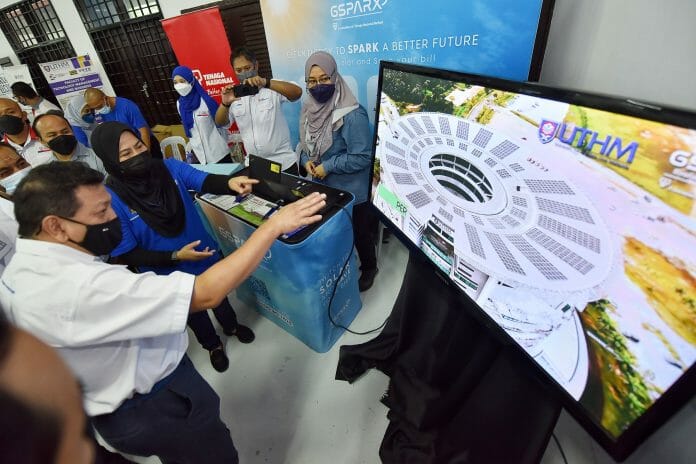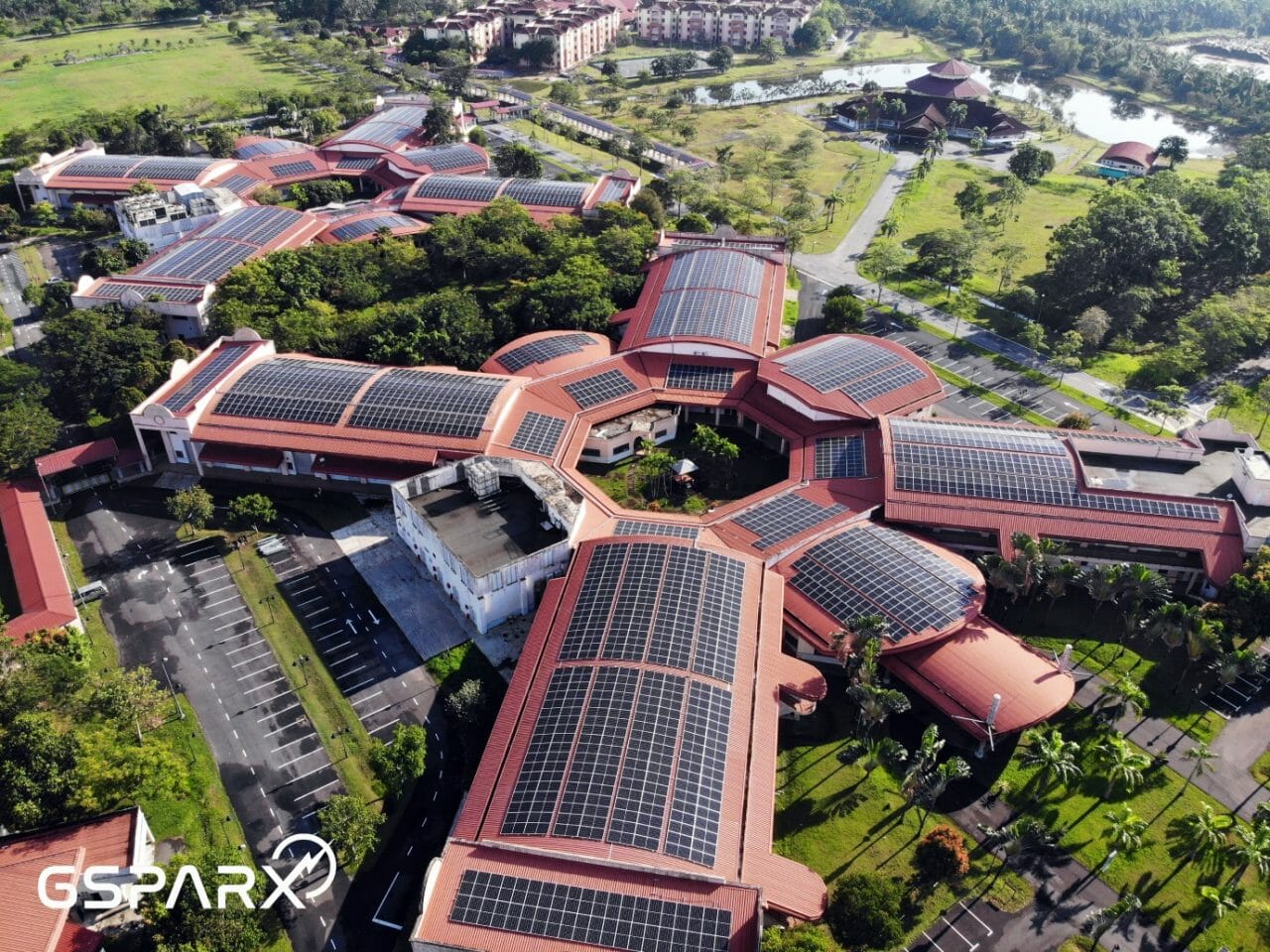Tenaga Nasional Berhad (TNB), through its wholly-owned subsidiary, GSPARX Sdn. Bhd. (GSPARX), and Universiti Tun Hussein Onn Malaysia (UTHM) have formed a smart collaboration on research and development (R&D) as well as knowledge sharing with the Faculty of Electrical and Electronics Engineering (FKEE) in the field of renewable energy (RE), specifically solar energy.
According to TNB’s Chief Retail Officer, Datuk Ir. Megat Jalaluddin Megat Hassan, TNB is ready to contribute their expertise in the field of solar energy through GSPARX to assist UTHM in its R&D and training on solar photovoltaic systems.
He added that GSPARX had completed its solar system installation at UTHM campus in Parit Raja, comprising 25 buildings including a walkway and solar carpark. The system, which has been in operation since 12 November 2021, is offered at zero upfront cost to UTHM.
“TNB is willing to extend our expertise in the field of solar energy through GSPARX by collaborating with UTHM in R&D and knowledge sharing on solar photovoltaic systems, which is aligned with our aspiration to be the leading provider of sustainable energy solutions in Malaysia and internationally,” he said.
This was shared by Megat Jalaluddin at the MoU Document Exchange Ceremony on the Collaboration between UTHM and GSPARX and the Official Launch of the Solar PV System in Batu Pahat, Johor on December 19. The exchange of the MoU documents was witnessed by the Minister of Higher Education, Datuk Seri Dr Noraini Ahmad.
The Vice Chancellor of UTHM, Professor Datuk Dr Wahid Razzaly explained that UTHM became the first public institution of higher learning with the largest rooftop solar installation in Malaysia to date.
“The rooftop solar project at UTHM’s main campus, comprising 25 selected buildings, has a capacity of 6.9MWp, generating an estimated savings of RM25.7 million in electricity bills throughout the 21-year agreement period,” he added.
This initiative is capable of reducing carbon dioxide (CO2) emissions in the quantum of 6,203 metric tonnes per year. This amount is equivalent to removing 1,359 vehicles per year on the road or planting 103,293 saplings to function as a carbon sink for absorption of carbon within ten years.










